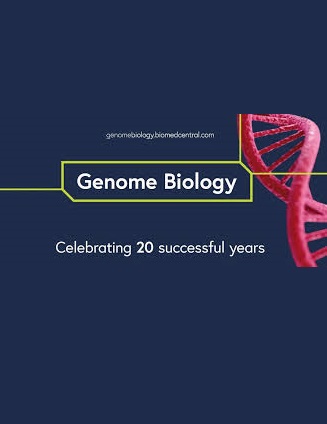Survey of gene, lncRNA and transposon transcription patterns in four mouse organs highlights shared and organ-specific sex-biased regulation
IF 10.1
1区 生物学
Q1 BIOTECHNOLOGY & APPLIED MICROBIOLOGY
引用次数: 0
Abstract
Sex-biased gene regulation is the basis of sexual dimorphism in phenotypes and has been studied across different cell types and different developmental stages. However, sex-biased expression of transposable elements (TEs), which represent nearly half of the mammalian genome and have the potential of influencing genome integrity and regulation, remains underexplored. We report a survey of gene, lncRNA, and TE expression in four organs from mice with different combinations of gonadal and genetic sex. The data show remarkable variability among organs with respect to the impact of gonadal sex on transcription with the strongest effects observed in the liver. In contrast, the X-chromosome dosage alone had a modest influence on sex-biased transcription across organs, albeit interaction between X-dosage and gonadal sex cannot be ruled out. The presence of the Y-chromosome influences TE, but not gene or lncRNA, expression in the liver. Notably, 90% of sex-biased TEs (sDETEs) reside in clusters. Moreover, 54% of these clusters overlap or reside less than 100 kb from sex-biased genes or lncRNAs, share the same sex bias, and also have higher expression levels than sDETE clusters that do not co-localize with other types of sex-biased transcripts. We test the heterochromatic sink hypothesis that predicts higher expression of TEs in XX individuals finding no evidence to support it. Our data show that sex-biased expression of TEs varies among organs with the highest numbers of sDETEs found in the liver following trends observed for genes and lncRNAs. It is enhanced by proximity to other types of sex-biased transcripts.四种小鼠器官中基因、lncRNA和转座子转录模式的调查强调了共享和器官特异性性别偏倚调节
性别偏倚基因调控是表现型性别二态性的基础,已经在不同细胞类型和不同发育阶段进行了研究。然而,转座因子(te)的性别偏表达仍未得到充分研究,te占哺乳动物基因组的近一半,具有影响基因组完整性和调控的潜力。我们报告了一项基因、lncRNA和TE在不同性腺性和遗传性组合小鼠四个器官中的表达的调查。数据显示,性腺性别对转录的影响在各器官之间存在显著差异,在肝脏中观察到的影响最大。相比之下,尽管不能排除x染色体剂量和性腺性别之间的相互作用,但单独的x染色体剂量对跨器官的性别偏倚转录有适度的影响。y染色体的存在影响TE,但不影响基因或lncRNA在肝脏中的表达。值得注意的是,90%的性别偏见te (sDETEs)存在于集群中。此外,这些簇中有54%与性别偏倚基因或lncrna重叠或距离小于100 kb,具有相同的性别偏倚,并且比不与其他类型的性别偏倚转录物共定位的sdet簇具有更高的表达水平。我们测试了异色汇假说,该假说预测了XX个体中te的较高表达,但没有证据支持它。我们的数据显示,在肝脏中发现的sdees数量最多的器官中,te的性别偏倚表达存在差异,这与基因和lncRNAs的趋势一致。它通过接近其他类型的性别偏向转录本而增强。
本文章由计算机程序翻译,如有差异,请以英文原文为准。
求助全文
约1分钟内获得全文
求助全文
来源期刊

Genome Biology
Biochemistry, Genetics and Molecular Biology-Genetics
CiteScore
21.00
自引率
3.30%
发文量
241
审稿时长
2 months
期刊介绍:
Genome Biology stands as a premier platform for exceptional research across all domains of biology and biomedicine, explored through a genomic and post-genomic lens.
With an impressive impact factor of 12.3 (2022),* the journal secures its position as the 3rd-ranked research journal in the Genetics and Heredity category and the 2nd-ranked research journal in the Biotechnology and Applied Microbiology category by Thomson Reuters. Notably, Genome Biology holds the distinction of being the highest-ranked open-access journal in this category.
Our dedicated team of highly trained in-house Editors collaborates closely with our esteemed Editorial Board of international experts, ensuring the journal remains on the forefront of scientific advances and community standards. Regular engagement with researchers at conferences and institute visits underscores our commitment to staying abreast of the latest developments in the field.
 求助内容:
求助内容: 应助结果提醒方式:
应助结果提醒方式:


